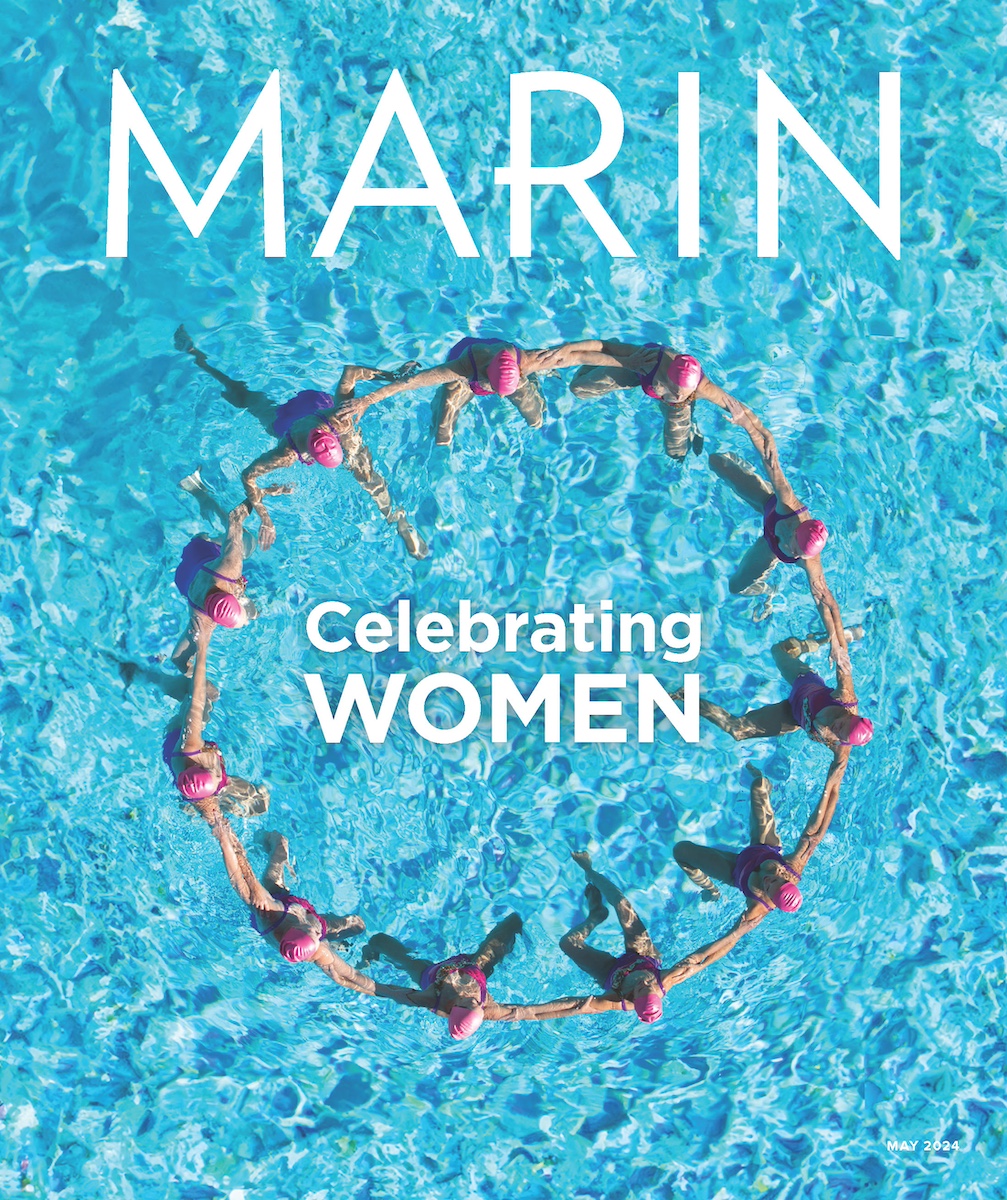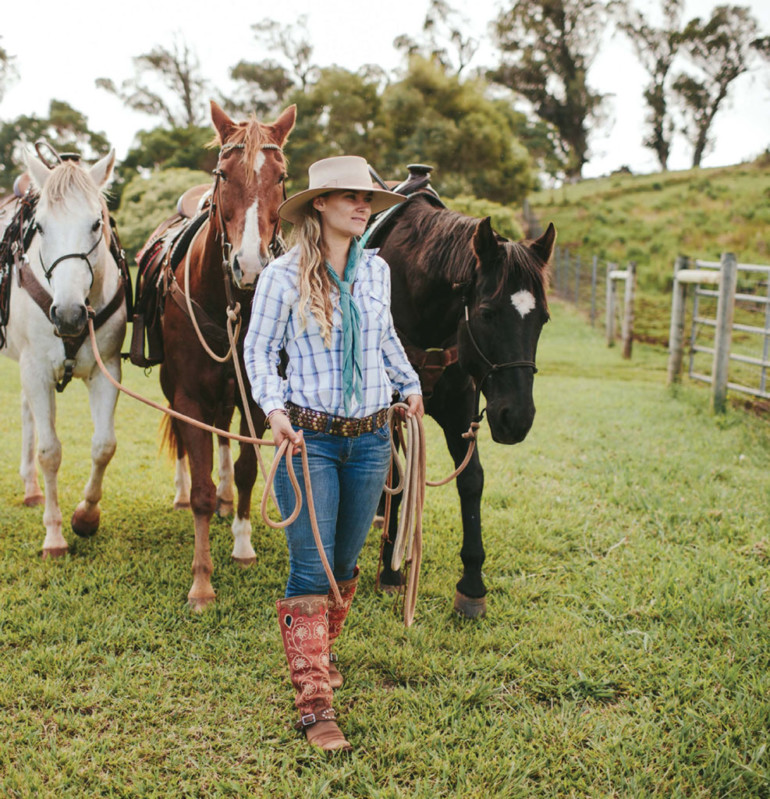WHETHER IT’S YOUR first trip to the islands or it’s been too many to count, the chance to “talk story” with members of the state’s pioneer ranching families is a memorable treat not to be missed. Thankfully, a few now open their doors to show visitors this part of Hawaii’s history and their own role and legacy as stewards of the land.
Piiholo Ranch, Maui
The Baldwin family history and influence in the state date back to the missionary era, when Rev. Dwight Baldwin and wife Charlotte moved to Lahaina town in 1836.
Besides his preacherly duties, Dwight is credited with “saving Maui” during the smallpox epidemic of 1853 by delivering vaccinations via horseback all over the island. The couple’s entrepreneurial son Henry Perrine (HP) Baldwin started the island’s first sugar plantation and, along with a few partners, established 34,000-acre Haleakala Ranch, gateway to Maui’s storied upcountry.
HP’s youngest son, Samuel Alexander Baldwin, managed Haleakala Ranch through a colorful time in Maui’s history, before his own son, Richard “Manduke” Baldwin, known as “cattleman of the century,” took over. Continuing the family lineage of champion horsemen, Manduke’s son Peter Baldwin worked on the ranch until his retirement, then purchased a picturesque portion of Haleakala, where he now operates Piiholo Ranch.
This virtually untouched slice of history sits alongside a rainforest including native trees and bushes such as acacia koa, known for its prized hardwood; the flowering and honey-producing ohia lehua; the ferns papapalai and kupukupu (used in hula); iholena (banana) and many other culturally significant plants. Learn about ranch history and nearby flora and fauna by booking a paniolo horseback ride; options vary from two hours to a cattle roundup called “Cowboy for a Day.” For extra adventure, arrive on the ranch by helicopter. After riding with Peter through the verdant acreage, guests of Four Seasons Maui have the opportunity to chat with this seventh-generation Hawaiian cowboy over a gourmet lunch prepared by the Four Seasons chef.
IF YOU GO Piiholo Ranch (piiholo.com) offers many visitor experiences, including a one-hour horseback lesson ($125); two-hour horseback rides (from $240, includes snacks and water); waterfall hikes; a three-hour private horseback trip (from $360, includes lunch); and Cowboy for a Day, a twoand- half-hour cattle-herding ride ($360, lunch included, Tuesday and Thursday only). fourseasons.com/maui
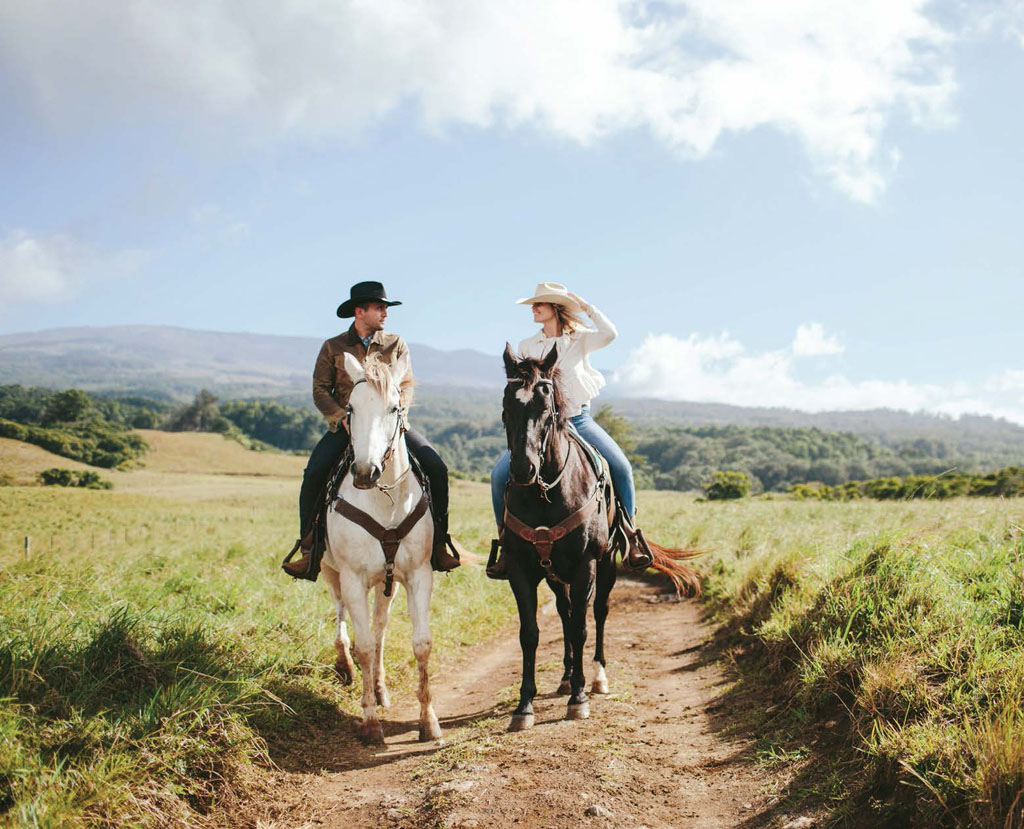
Princeville Ranch, Kauai
In 1831, the British consul to the Kingdom of Hawaii leased a portion of what’s now Princeville Ranch from the governor of Kauai to raise cattle. Robert Wyllie, who added the North Shore acreage to his holdings of Hanalei sugarcane fields in 1855, later dubbed the property “Princeville Plantation” in honor of a visit by Queen Emma and her young son Albert in 1860. Sadly, the toddler prince died two years later and Wyllie three years after that.
More owners and ventures have followed; since 1994, the 2,500-acre ranch has been leased by members of the Carswell family. Curly and Gale Carswell, who moved there from Oahu in the late 1960s, started offering horseback rides across the property’s emerald pastures to 80-foot Kalihiwai Falls in 1978.
But the family’s ties to Kauai and Princeville Ranch go even deeper: Gale’s great-great-uncle Abner S. Wilcox, the Hilo-born son of missionaries Abner and Lucy Wilcox, owned the ranch from 1895 to 1919. After Gale passed away in May at age 78, her memorial service was held at Grove Farm in Lihue, where her great-aunt Mabel Wilcox once lived.
“My parents were very much old-school Hawaii. They were very much about perpetuating the land and the culture and the family feel,” says Karin Carswell Guest, one of Gale and Curly’s four children. She and husband Jeff manage 150 head of cattle and run Princeville Ranch Adventures, which includes zip line and hiking tours created by her brother David and his wife Denise, as well as ATV and horseback rides.
Like her siblings, Guest attended boarding school on the Big Island and college on the mainland but eventually returned to Kauai. “There’s a sense for all of us that Hawaii is a special place and we need to protect it,” she says. “Development is inevitable, but as much as possible, we need to try to limit the expansion. Although cattle ranching is not all that profitable, it allows us to keep the land in agriculture and we can also do some eco-adventures for visitors and locals. It’s win-win for the land and the community.”
IF YOU GO Princeville Ranch Adventures (princeville ranch.com) operates daily zip line tours ($139–$159); off-road ATV rides ($129–$328); frequent horseback rides (from $119); waterfall hikes (from $129); and combination adventures including kayaking ($159 adults, $129 children). The Westin Princeville Ocean Resort Villas (from $341, westinprinceville.com) offers guests free shuttles to the check-in office in Princeville.
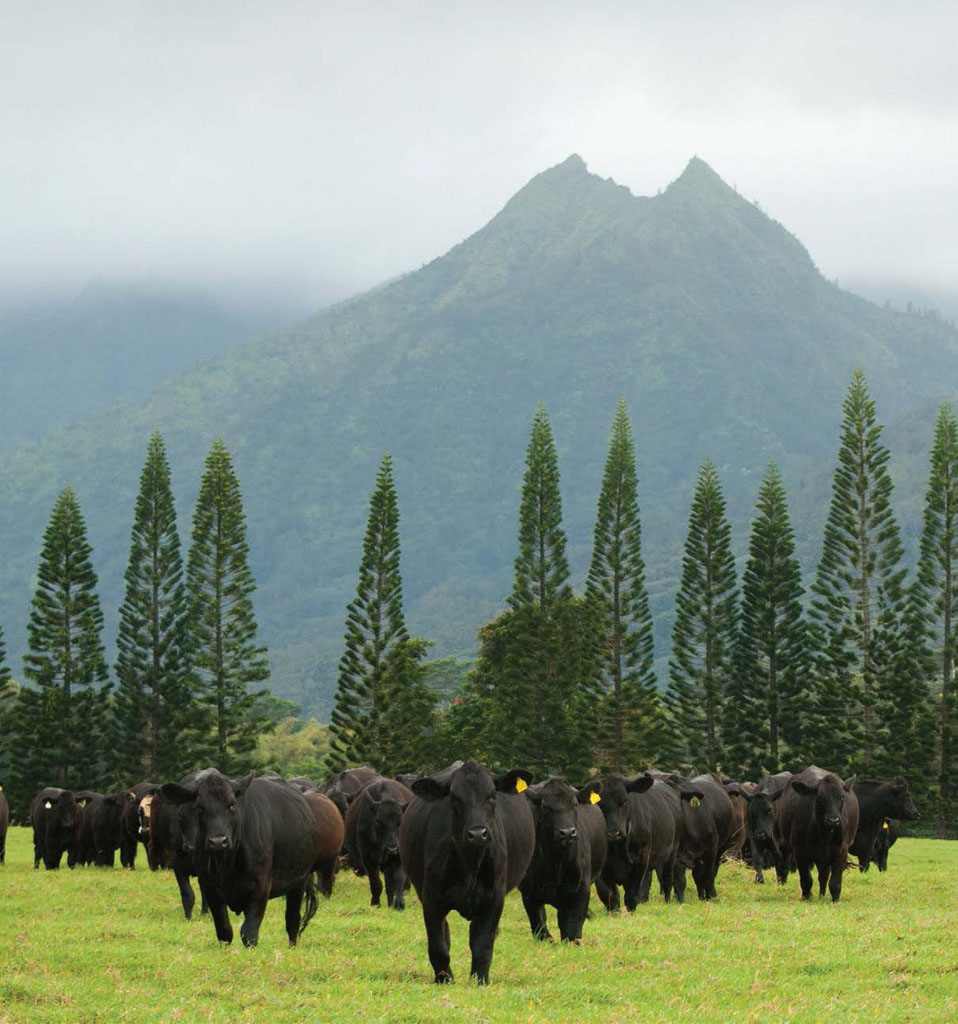
Ponoholo Ranch, Hawaii Island
The story of 11,000-acre Ponoholo Ranch, stretching from high atop Kohala Mountain to the sea, is the story of marriages between some of Hawaii’s most prominent families — and one amicable division of land.
Harry von Holt, the son of a German merchant who arrived in Honolulu in 1851 and an Englishwoman brought to Hawaii as a child, supervised ranching on the Ewa Plain, among other key positions. In 1889, he married Ida Knudsen, the daughter of Valdemar Knudsen, a Norwegian sugarcane plantation owner who had overseen ranchlands on Kauai for Kamehameha IV, and Anne Sinclair, whose Scottish mother had bought the entire island of Niihau in 1864.
In 1928, Harry and Ida von Holt’s son Ronald joined forces with Atherton Richards, scion of the missionary family that later co-founded Castle & Cooke, to purchase the misty slopes and scrubby lowlands of Kahua Ranch. When Ronald died in 1953, his widow moved her children to Honolulu but bought another home near the ranch, where they would happily spend their vacations riding horses and helping with chores.
“We had a strong attachment to the land here,” explains Harry “Pono” von Holt, 70, who returned to Kahua Ranch as a young adult after years on the mainland. “There was always a thought of coming back and working here.”
In 1980, von Holt and Atherton Richards’ heir, nephew Monty Richards, decided to divide Kahua Ranch in two but still share some operations. Today, von Holt’s daughter Sabrina English is president of Ponoholo Ranch, which bears the Hawaiianized version of his surname; her husband, Chris, manages approximately 5,000 head of cattle, some of which end up as grass-fed beef at Whole Foods.
While her three siblings work elsewhere, “they all have a really good feeling for the property and the lifestyle,” von Holt notes. “I think there is a responsibility, a kuleana, to take care of the property. It’s a resource that they can’t easily duplicate anywhere else.”
IF YOU GO Separately owned Paniolo Adventures (panioloadventures.com) leads a variety of horseback rides across Ponoholo Ranch Monday–Saturday, from an hourlong City Slicker option ($69) to a four-hour Wrangler version for experienced riders ($175); the 1.5-hour Sunset Ride ($89) adds dazzling colors to the spectacular views. The ranch entrance is about 35 minutes from the Mauna Kea Resort and 20 minutes from the cowboy-themed Kamuela Inn in Waimea.
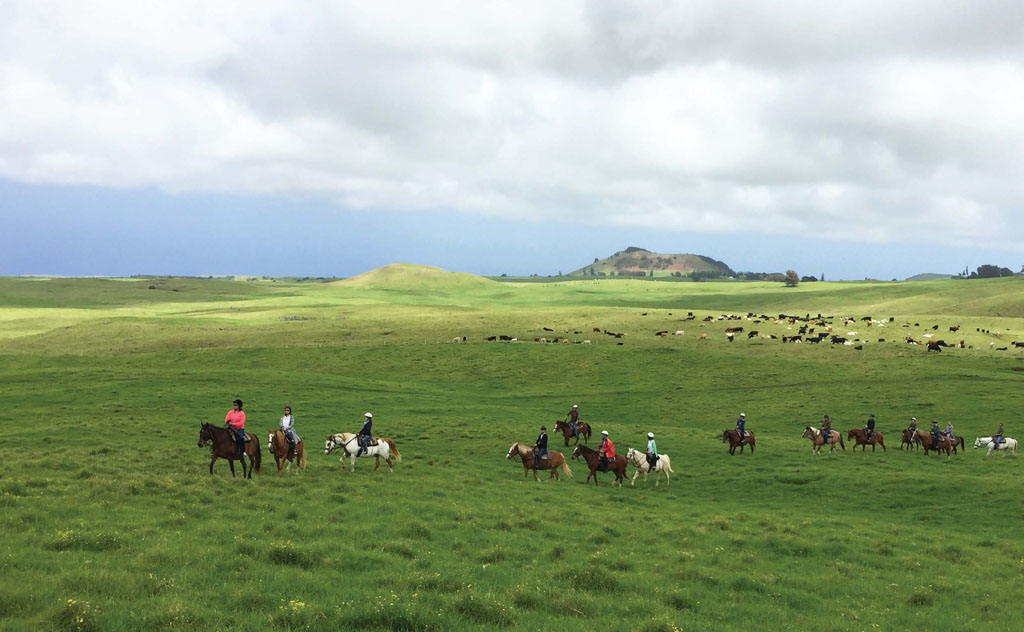
Kualoa Ranch, Oahu
Flanked by the fluted ridges of the Koolau Mountains on Oahu’s windward side, Kualoa Valley attracted Hawaiian chiefs and refuge seekers in earlier times. Now it’s part of 4,000-acre Kualoa Ranch, which hosts Hollywood crews and relaxation seekers — plus some 600 cattle, 120 horses and 50 sheep.
For Kualoa Ranch president John Morgan, 61, the verdant setting is both office and boyhood home. His missionary forefather, Dr. Gerrit P. Judd, co-founded Punahou School (President Obama’s alma mater) in 1841 and later became a trusted adviser of King Kamehameha III, who sold Judd 622 acres in Kualoa Valley in 1850. The sixth generation of his family to steward the ranch, which includes Kaaawa and Hakipuu valleys, Morgan grew up on land later claimed by the city for Kualoa Park.
In his teen years, Morgan recalls, his labors included “fixing fences, spraying herbicides on pastures, irrigating cornfields, working on the flower farm,” and even doing the books one summer. Following college classes at Oregon State and the University of Hawaii, Morgan became ranch manager in 1981.
Four years later, realizing there was little income or growth potential in cattle, Morgan says he “jumped headfirst” into a diversified recreation business. Today some 1,500 people at a time might tour the ranch, on everything from ATVs to zip lines, but their relatively small groups quickly disperse in the vast landscape seen in Jurassic Park, Lost and Hawaii Five-O, among other films and TV shows.
“It’s an extremely beautiful property with a big cultural legacy associated with it,” Morgan says. “You put all of those things together and everyone’s experience is ‘Wow, we’re just temporary custodians and we need to do what we can to try to preserve it.’ Luckily we’ve evolved and shepherded a business model that means we can preserve it.”
IF YOU GO Guided tours of Kualoa Ranch (kualoa.com) last one to two-and-a-half hours; book several weeks ahead. Daily options include farm and fishpond tours ($46), ATV excursions ($85–$130), horseback rides ($85–$130), zip lines ($160), electric bike tours ($130) and other expeditions via Jeep, catamaran or vintage school bus ($46); the ranch’s “Secret Island” hosts beach activities ($46). Combination tours with buffet lunch are also available, as are shuttle transfers from Waikiki ($10–$15).
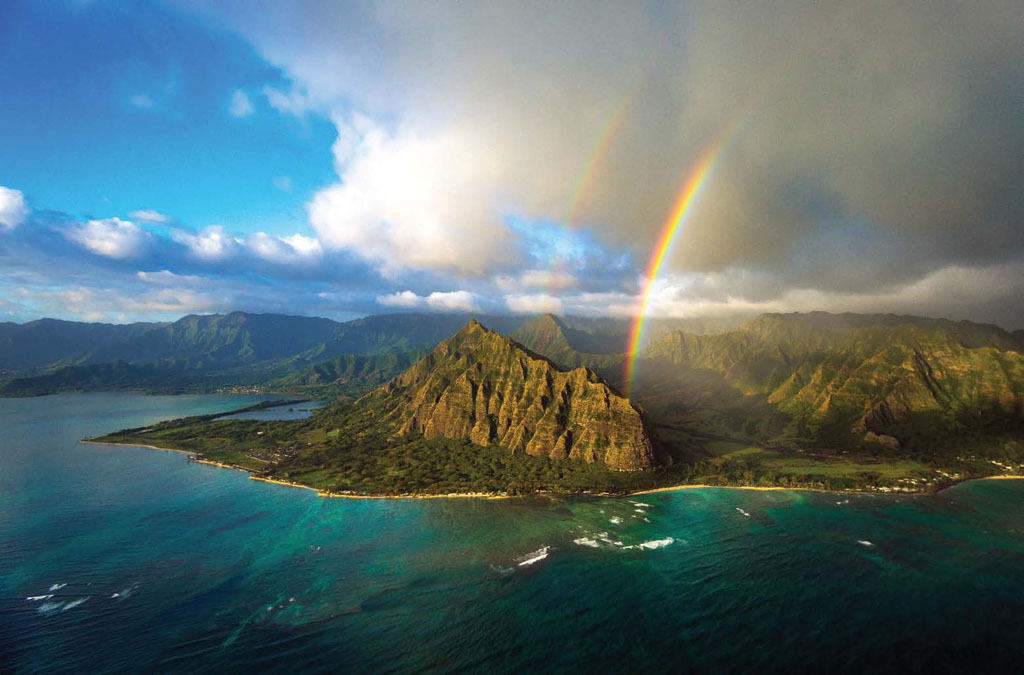

Travel and features writer Jeanne Cooper fell in love with Marin and the Bay Area as a graduate student at Stanford University. After 20 years as an editor and writer for the Washington Post, Boston Globe and San Francisco Chronicle, she began a freelance career that has taken her from the Austral Islands to Zimbabwe, with many visits to Hawaii in between. Her stories have appeared in numerous national and regional magazines, including Hemispheres, Sunset, San Francisco and Nob Hill Gazette, as well as Marin and Local Getaways. The author of several Frommer’s guidebooks, she now lives on the Big Island, where she’s active in animal rescue. She still enjoys exploring Northern California with her husband and friends.
